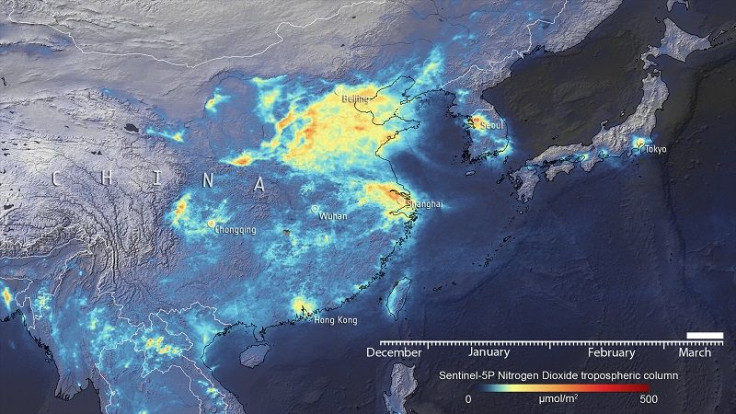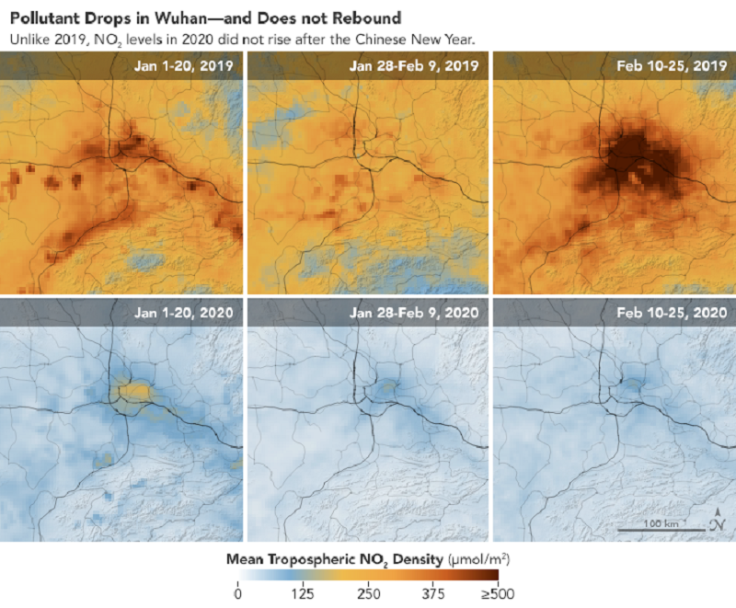Coronavirus Update: ESA Satellite Animation Shows 'Dramatic' Drop In Pollutants Over China

KEY POINTS
- Pollutant emissions in China significantly decreased partly because of COVID-19
- ESA animation of pollutant data shows the 'dramatic' drop in emissions
- By early March, however, the nitrogen dioxide emissions began to increase again
The COVID-19 pandemic has halted normal life in many parts of the world. In the hardest-hit countries like Italy and China, the dramatic reduction in activities also reduced problematic air pollution.
Only recently, the European Space Agency (ESA) satellite data showed how the COVID-19 pandemic decreased the nitrogen dioxide emissions over northern Italy. In a new animation using data from the agency's Copernicus Sentinel-5P satellite, the stark differences in nitrogen dioxide emissions over China can be observed from December until March 16.
The short animation starts in late December when nitrogen dioxide emissions were still high and can be observed in bright oranges and reds.
Around late January until February, emissions significantly drop, partly because of Lunar New Year Celebrations, which typically causes emission drops each year and also because by this time, factories have been closed and roads have been cleared to prevent the spread of coronavirus. By late February and early March, however, the outbreak has slightly eased in the country and emissions have started to increase again.
According to Copernicus mission manager Claus Zehner, there is an estimated 40 percent reduction in nitrogen dioxide emissions over Chinese cities but these are just rough estimates especially considering that weather can also impact emissions.
Similarly, earlier data on the pollutant declines in China also showed that, unlike 2019, nitrogen dioxide emissions did not rise again after the Lunar New Year celebrations. This suggests that something else apart from the Lunar New Year affected the pollutant levels in China.

"As nitrogen dioxide is primarily produced by traffic and factories, it is a first-level indicator of industrial activity worldwide," ESA Director of the Earth Observation Program, Josef Aschbacher said. "What is clearly visible is a significant reduction of nitrogen dioxide levels over China, caused by reduced activity due to COVID-19 restrictions, but also the Chinese New Year in January."
Data from the Copernicus Atmosphere Monitoring Service also shows that one of the most important air pollutants, fine particulate matter, significantly decreased in February 2020 compared to the last three years, with computer models showing a 20 to 30 percent decrease in surface particulate matter over large parts of China.
Simply put, the satellite image shows how the nationwide restrictions in China because of COVID-19 resulted in reductions of pollutant emissions from major sources such as industrial facilities and vehicles. Now that the outbreak has slightly eased in the country and many factories, public spaces, and even schools have begun to reopen, it is likely that the pollutant levels will increase again.
© Copyright IBTimes 2024. All rights reserved.






















